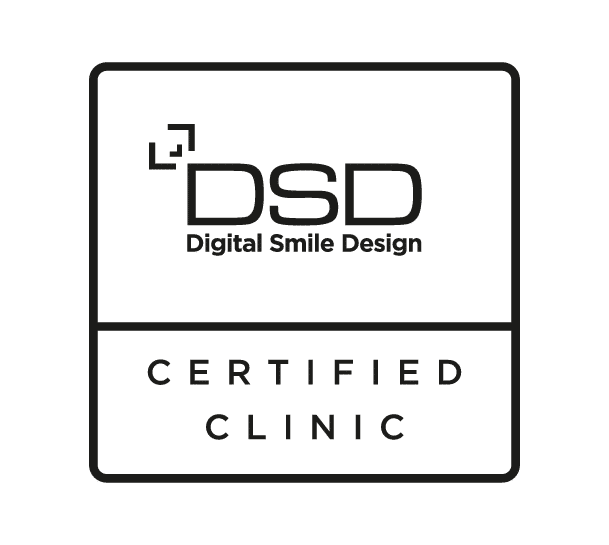
How Often Should You Floss?
When it comes to maintaining a healthy, bright smile, brushing your teeth is only half the job done. Many people forget one important step in their oral care routine — flossing. You may have heard your dentist say it again and again: “Don’t forget to floss!” But how often should you actually floss? Is it possible to floss too much? And what happens if you skip it altogether?
Let’s dive into everything you need to know — how often to floss, why flossing is important, when it can be harmful, and how it can completely transform your oral health.
Table of Contents
What Is Flossing and Why Do We Do It?
Flossing is the act of cleaning between your teeth using a thin thread called dental floss. Even if you brush twice a day, your toothbrush can’t reach the tight spaces between your teeth where food particles and plaque hide.
Over time, this hidden plaque hardens into tartar, which can lead to gum disease, bad breath, and even tooth loss. That’s why flossing plays such a key role — it removes the debris and bacteria from places your toothbrush simply can’t reach.
How Often Should You Floss?
According to most dentists and the American Dental Association (ADA), you should floss at least once a day.
Flossing once a day is enough to remove plaque buildup between your teeth and prevent gum inflammation. You can do it either in the morning, after lunch, or before bed — the timing doesn’t matter as much as the consistency.
The Best Time to Floss
While any time is better than not at all, flossing before brushing at night is considered most effective. Here’s why:
- Flossing first helps remove debris and loosen plaque.
- Brushing afterward helps clean away loosened particles.
- Fluoride from your toothpaste can then reach between teeth more effectively.
So, if you’re building a night-time oral care routine, start with flossing → brushing → rinsing with mouthwash.
What Happens If You Don’t Floss Regularly?
Skipping flossing might not seem like a big deal, especially if your teeth look clean after brushing — but appearances can be deceiving.
Here’s what happens when you don’t floss regularly:
- Plaque builds up between teeth.
Within 24 hours, plaque begins to harden into tartar. Once that happens, it can only be removed by a dentist. - Gums start to bleed and swell.
Food particles and bacteria cause inflammation, leading to gingivitis, the first stage of gum disease. - Persistent bad breath.
The trapped food and bacteria release foul-smelling gases that lead to chronic bad breath. - Cavities between teeth.
Bacteria feed on leftover sugars, producing acids that wear down your enamel — especially between your teeth, where brushing can’t reach. - Advanced gum disease (periodontitis).
Over time, the infection spreads deep into the gums, damaging the bone that supports your teeth and potentially leading to tooth loss.
In short: not flossing regularly can silently destroy your oral health — even if you brush perfectly every day.
Benefits of Flossing Daily
Flossing is one of the simplest habits that can make a huge difference in your oral and overall health. Here are the major benefits of making it part of your daily routine:
1. Prevents Gum Disease
Daily flossing removes plaque and food debris that cause gum irritation. Regular flossing helps prevent gingivitis, the early stage of gum disease.
2. Keeps Your Breath Fresh
No one wants bad breath! Flossing helps eliminate the bacteria that produce foul smells, keeping your mouth fresh and clean.
3. Protects Your Teeth from Decay
Cavities often start in the tight spaces between your teeth. Flossing helps prevent interproximal decay, keeping your enamel strong.
4. Enhances the Effect of Brushing
When you floss first, brushing afterward becomes more effective — toothpaste can reach areas that were previously blocked by plaque or food particles.
5. Improves Overall Health
Poor oral hygiene has been linked to heart disease, diabetes, and respiratory infections. By maintaining healthy gums and teeth, you’re also supporting your overall wellbeing.
6. Keeps Your Smile Bright
Flossing helps remove hidden stains caused by food and beverages. Over time, it can help maintain a naturally brighter, cleaner smile.
Why Flossing Can Sometimes Be Bad
While flossing has many benefits, doing it incorrectly or too aggressively can actually harm your gums and teeth. Here are a few common mistakes to avoid:
1. Flossing Too Hard
If you snap the floss between your teeth or force it against your gums, you can cause bleeding, pain, or even gum recession.
Tip: Always slide the floss gently between your teeth and curve it in a “C” shape around each tooth to avoid injury.
2. Over-Flossing
More is not always better. Flossing too many times a day (for example, after every meal) can irritate your gums and make them sensitive. Once a day is ideal for most people.
3. Reusing the Same Floss
Using the same piece of floss repeatedly spreads bacteria instead of removing it. Always use a fresh section of floss for each tooth.
4. Not Using the Right Technique
Flossing isn’t about just passing the thread between teeth — it’s about cleaning the sides of each tooth carefully. Improper technique can make flossing ineffective.
5. Skipping Areas
It’s common to rush through flossing, but remember — every tooth matters, especially those hard-to-reach molars in the back.
Correct Way to Floss Your Teeth
If you’re not sure whether you’re flossing correctly, here’s a quick step-by-step guide:
- Take about 18 inches of floss.
Wrap most of it around your middle fingers, leaving 1–2 inches to work with. - Hold the floss tightly between your thumbs and index fingers.
- Gently guide the floss between your teeth using a back-and-forth motion.
- Curve the floss into a “C” shape against one tooth and slide it up and down gently.
- Repeat on the other side of the space before moving to the next tooth.
- Use a clean section of floss for each tooth.
- Rinse your mouth after flossing to remove loosened debris.
If you have braces, crowns, or dental bridges, you can use floss threaders, interdental brushes, or water flossers to make cleaning easier.
How Long Should You Spend Flossing?
Flossing your entire mouth shouldn’t take more than 2–3 minutes. The key is not how long you floss, but how carefully you do it. Make it part of your daily self-care routine — a small investment for a lifetime of healthy teeth.
Alternatives to Traditional Flossing
If you find string floss difficult or uncomfortable, you can try these effective alternatives:
- Water flossers: Use a jet of water to remove plaque and food particles between teeth. Great for people with braces or sensitive gums.
- Interdental brushes: Small, bristled brushes designed to clean between teeth — ideal for wider gaps.
- Floss picks: Handy tools with pre-threaded floss, convenient for quick use and travel.
While these can help, traditional flossing still remains one of the most effective methods when done properly.
What Dentists Say About Flossing Frequency
Dentists agree that flossing once a day is enough to maintain gum and tooth health — as long as you’re doing it correctly. If you have gum problems, tight teeth, or orthodontic appliances, your dentist might suggest a specific flossing tool or more frequent cleaning.
The main goal isn’t just to floss often, but to floss effectively and gently.
Can Children Floss Too?
Absolutely! Once a child’s teeth start touching, usually around age 2 or 3, parents should help them floss. Teaching good habits early sets the foundation for a lifetime of healthy teeth.
Use floss picks or soft floss designed for kids to make the process easier and more comfortable.
Common Myths About Flossing — Busted!
Myth 1: Flossing makes your gums bleed.
Fact: Healthy gums don’t bleed. If your gums bleed, it’s a sign that you need to floss more often, not less.
Myth 2: Flossing isn’t necessary if you brush well.
Fact: Even the best toothbrush can’t reach between teeth. Flossing is essential for complete cleaning.
Myth 3: Mouthwash can replace flossing.
Fact: Mouthwash helps reduce bacteria but cannot physically remove plaque like flossing does.
Myth 4: Flossing takes too long.
Fact: Once you get used to it, it takes just 2 minutes — a small step for long-term dental health.
Conclusion: Floss Once a Day for a Lifetime of Healthy Smiles
Flossing might seem like a small part of your routine, but it’s one of the most powerful habits for keeping your teeth and gums healthy.
Make it a non-negotiable part of your daily routine — just like brushing.
Remember:
- Floss once daily.
- Use the correct technique.
- Be gentle but thorough.
With just a few minutes of effort each day, you can prevent gum disease, cavities, and bad breath — and enjoy a cleaner, brighter, healthier smile for life.


















